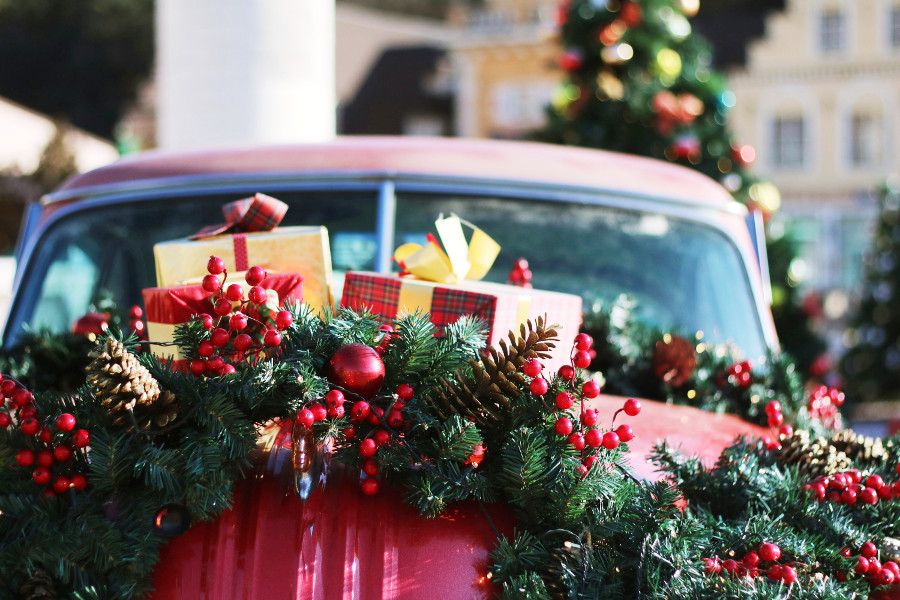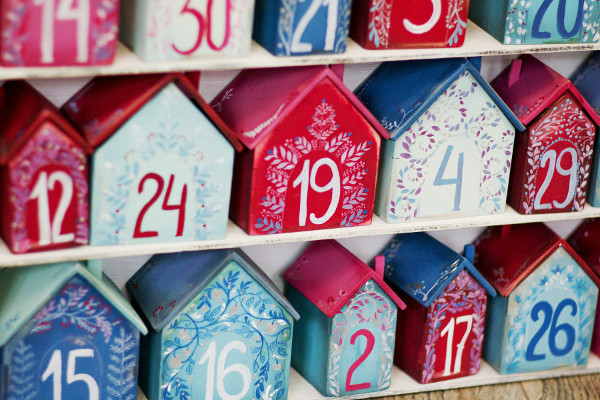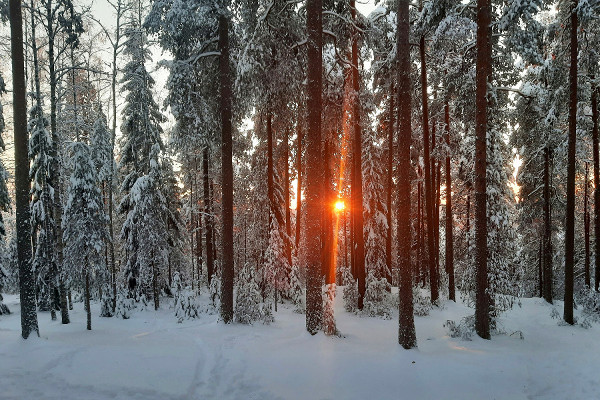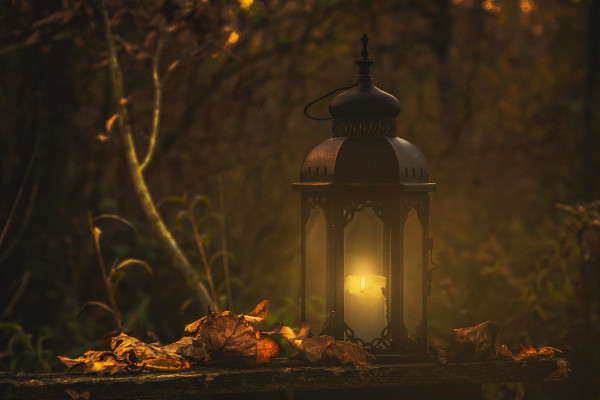How to Celebrate Christmas with Joy and Fun? - Traditions, Food, Decoration and Gift Ideas
Christmas is a time of celebration and joy, filled with traditions that bring families together. This season offers a rich blend of cultural and historical practices. Whether it's the joy of decorating a Christmas tree, exchanging gifts, or singing carols, the spirit of Christmas fills homes and hearts, making it one of the most beloved times of the year for people of all backgrounds.

1. What is the origin of celebrating Christmas?
The pagan origin of Christmas stems from ancient winter solstice festivals, particularly the Roman holiday of Saturnalia. This week-long celebration, honoring the god Saturn, involved feasting, gift-giving, and merrymaking. The Norse also celebrated Yule during the winter solstice, marking the rebirth of the sun. Early Christians adopted and adapted these traditions to coincide with the birth of Jesus, celebrating his arrival during the solstice. Over time, these festive elements merged into the modern Christmas celebration, incorporating both religious and secular customs rooted in ancient pagan rituals.
2. When is Christmas Celebrated?
Christmas, at its core, is celebrated on December 25th. It marks the birth of Jesus Christ, but its modern celebration has grown beyond religious significance. For Christians, it’s a day of spiritual reflection, but for many, it’s a time for family, festivity, and reflection on the year. The season typically begins in late November, building up through Advent, and culminates on Christmas Eve with family dinners and for the religious folks, with midnight Mass in some cultures. In many countries, especially in Europe, it's on the 24th December (Christmas Eve) when the family comes together and gifts are exchanged. In other countries, mostly in English speaking territories, presents are opened on the 25th December (Christmas Day) in the morning, and the 'big feast' with family member is also scheduled for this day. The celebrations carry on well past December 25th, stretching into New Year’s Eve and the subsequent New Year's Day celebrations. Regardless of the specific date, the Christmas season is filled with joy and togetherness.
3. How is Christmas Eve Celebrated in different countries?
Christmas Eve is a time of warmth, family, and festive traditions, no matter where you are. In Poland, families gather for "Wigilia," a 12-course meal, each dish representing something symbolic. In Mexico, "Nochebuena" comes alive with fireworks and a late-night feast, followed by church services. Italians celebrate with "La Vigilia," a seafood-centered meal, before heading to midnight Mass. Scandinavian countries often have big feasts followed by games or storytelling. In Germany, the Advent calendar counts down the days to Christmas, while the "Christkind" brings gifts instead of Santa. No matter the specific customs, Christmas Eve worldwide is a shared time to celebrate family, love, and the anticipation of Christmas Day.
4. What is Boxing Day and how is it celebrated?
Boxing Day, celebrated on December 26th, stems from British tradition. Originally, it was a day when the wealthy gave boxes of gifts or money to servants, as well as to the less fortunate. Over time, this evolved into a public holiday where many take advantage of huge sales or participate in sporting events like football or horse racing. In countries like Canada and Australia, it's a day for family gatherings, shopping, or enjoying outdoor activities. Though its origins may be charitable, for many, Boxing Day is more about relaxation, fun, and post-Christmas celebrations.
5. Who was Saint Nicholas, and how did he become Santa Claus?
Saint Nicholas, a 4th-century bishop from Myra (modern-day Turkey), was famed for his generosity and kindness, particularly to children and the poor. He became known for secretly leaving gifts, such as gold coins in stockings. Over time, stories of his kindness morphed into the figure of "Sinterklaas" in Dutch traditions. When Dutch settlers brought this tradition to America, it evolved into the beloved Santa Claus. The modern image of Santa – cheerful, bearded, and jolly – was further solidified in the 19th century by literature and media, making him the global gift-bringer we know today. There is even an official Santa Tracker set up by NORAD (North American Aerospace Defense Command) that you can follow online each year on the 24th December, watching an animated Santa sledding through the world in the sky with his reindeers delivering gifts to everyone.
6. What is the meaning behind the Christmas tree tradition?
The Christmas tree tradition has deep roots in European history, originating in Germany. Early Christians began decorating evergreen trees as symbols of eternal life. Over time, the tree became a central part of holiday festivities, symbolizing joy and unity. In the 16th century, candles were added to represent the light of Christ, and ornaments soon followed. Today, the Christmas tree is a central focal point in many homes, with families decorating it with lights, baubles, and tinsel. During the Advent period children can create handmade ornaments using DIY craft kits that later they can hang on the tree. These days, if you don't have a tree, you can choose a budget-friendly Christmas tree alternative. To create them it only takes a bit of creativity and some DIY stuff. Decorationg a tree brings people together and reflects the spirit of celebration and the warmth of the holiday season.
7. What are the most popular Christmas carols?
Christmas carols have a special place in the holiday season, adding a festive spirit to every gathering. Songs like "Silent Night," "Jingle Bells," "Hark! The Herald Angels Sing," "Joy to the World," and "O Holy Night" are among the most beloved. "Silent Night" offers a peaceful, spiritual atmosphere, while "Jingle Bells" injects fun and energy. "O Holy Night" stirs emotions with its powerful melody, and "Joy to the World" spreads exuberance. These carols are sung in churches, at family gatherings, and during public celebrations, all contributing to the magic of Christmas.
8. Why do we exchange gifts at Christmas?
Gift-giving at Christmas is rooted in both Christian and cultural traditions. In Christianity, it symbolizes the gifts the Three Wise Men gave to the infant Jesus, and it's a way of expressing love and gratitude. Over time, the tradition spread, and exchanging gifts became a way to show affection for friends and family. Saint Nicholas, known for his secretive generosity, also played a role in this tradition. Today, giving gifts at Christmas embodies the spirit of giving and kindness, fostering goodwill and connection between loved ones during this special time of year.

9. Why do we hang stockings at Christmas?
Hanging stockings for Christmas has its origins in the legend of Saint Nicholas. It’s said that he secretly placed gold coins in stockings hung by the fireplace to help a poor family. This story led to the tradition of children hanging stockings in hopes of receiving small gifts. Over time, stockings became a key part of Christmas décor, filled with candy, small toys, and treats. In modern times, the stocking represents both a sense of anticipation and the spirit of giving, and it has become a beloved custom in homes across the world.
10. What is the significance of mistletoe during Christmas?
Mistletoe has long been associated with Christmas and carries with it a symbolism of peace, love, and goodwill. Its use dates back to ancient Celtic and Norse cultures, where it was believed to have magical properties. Over time, mistletoe became intertwined with Christmas traditions, particularly in the custom of kissing beneath it. This practice symbolizes affection and is seen as a gesture of goodwill during the holiday season. Mistletoe’s placement in doorways or ceilings has become a cherished part of holiday décor, reinforcing the themes of love and togetherness that define Christmas.
11. How is the Advent season related to Christmas?
Advent is a season of anticipation and preparation for Christmas, beginning four Sundays before December 25th. For Christians, it’s a time to spiritually prepare for the birth of Jesus Christ. During Advent, families may light candles on an Advent wreath, one for each week, symbolizing hope, peace, joy, and love. Advent calendars also count down the days leading to Christmas. While Advent is religious in nature, it also sets the tone for the broader holiday season, helping people reflect on the significance of Christmas and the spirit of giving and joy that it brings.
12. Why are Christmas fairs so popular, and where can I find them to visit?
Christmas fairs are popular because they capture the festive spirit of the season through vibrant decorations, seasonal food, and unique gifts. They offer a sense of tradition, community, and nostalgia, attracting families and visitors. The combination of local crafts, holiday-themed entertainment, and seasonal treats creates a magical atmosphere. You can find Christmas fairs in many cities across Europe, such as the Christkindlesmarkt in Nuremberg, Germany, and Winter Wonderland in London. In the U.S., cities like New York and Chicago host large holiday markets and fairs that celebrate the season with lights, music, and festive activities. Nowadays, you can find several fairs in the same city where they might even have a special theme, such as a Medieval Christmas Market (they are popular in German speaking territories) or sustainable Christmas markets where the focus falls on the environmental aspect in terms of hand crafted gifts and the organization of the event. Most small towns also have their own mini Christmas markets, with a few booths and entertainment. It's not the size that matters here, but the good spirit!
13. What are popular Christmas dishes around the world?
Christmas meals vary across cultures, reflecting local tastes and traditions. In the UK, a traditional Christmas dinner might feature roast turkey, stuffing, gravy, and Christmas pudding. In the United States, families often enjoy turkey, ham, mashed potatoes, and pumpkin pie. In Mexico, "Tamales" are a popular dish, alongside "Bacalao" (salted cod). In Italy, the "Feast of the Seven Fishes" offers a variety of seafood dishes. In Australia, Christmas barbecues are common, often featuring fresh seafood to celebrate the holiday during the summer. These meals bring families together, each offering a unique taste of the season.
14. How do you decorate your home for Christmas?
Decorating your home for Christmas is a time-honored tradition, where lights, ornaments, and festive touches fill every corner. A Christmas tree is often the centerpiece, adorned with twinkling lights, colorful baubles, and meaningful ornaments. Garlands, wreaths, and mistletoe are hung around the home, adding to the festive ambiance. For many, the smell of pine or cinnamon fills the air, contributing to the holiday spirit. Some even decorate the outside of their homes with elaborate light displays. The act of decorating brings families together and creates a cozy, festive atmosphere to enjoy during the season.
15. What are the most popular Christmas songs?
Christmas songs are a beloved part of the holiday season, with many becoming classics that evoke warm
feelings of nostalgia. You can find curated playlists for Christmas songs on the various streaming platforms,
or buy them in physical formats such as CDs and vinyls. Here are some top choices for pop songs:
- Wham: Last Christmas
- Chris Rea: Driving Home for Christmas
- Band Aid 1984: Do They Know It’s Christmas?
- The Pointer Sisters: Santa Claus Is Coming To Town
- Mariah Carey: All I Want For Christmas Is You
- Brenda Lee: Rockin’ Around the Christmas Tree
- Eurythmics: Winter Wonderland
- Bobby Helms: Jingle Bell Rock
- Michael Bublé: It’s Beginning to Look a Lot Like Christmas
- Bing Crosby: White Christmas
16. What are the most popular Christmas movies?
Christmas movies have become an integral part of the holiday season, with classics that never fail to spread cheer. "It's a Wonderful Life" is a heartwarming tale of hope and redemption. "Home Alone" brings laughter and lighthearted fun, while "The Polar Express" enchants with its magical journey. "Love Actually" blends romance with holiday cheer, and "Miracle on 34th Street" brings a sense of wonder and belief. These films are often played on repeat in households and are a cherished part of Christmas traditions, creating lasting memories and fostering the spirit of togetherness. Hallmark is notorious for popping out at least a dozen holiday themed movies each year so there is a wide selection for easy-to-consume romantic Christmas movies. Interestingly enough, in Germany Christmas is the time when televised versions of the fairy tales by the Brothers Grimm are broadcast. They are often specifically produced for this time of the year. You can also catch some French, Italian, Czech and even Russian made fairy tale TV films during the Christmas period in the German speaking countries.
17. How do you plan ahead your Christmas shopping for gifts?
Planning ahead for Christmas shopping is key to avoiding the holiday rush and stress. Many people start by setting a budget and creating a list of everyone they need to buy for. It’s helpful to note gift ideas throughout the year, so when the time comes, you’re not scrambling for ideas. Shopping early allows you to find better deals and have gifts ready for wrapping. Online shopping is a great time-saver, but don’t forget to factor in shipping times. Planning ahead not only saves time and money but also ensures thoughtful and meaningful gifts for everyone.
18. When do you take down your Christmas tree and Christmas decorations?
Traditionally, Christmas decorations are taken down after January 6th, marking the end of the twelve days of Christmas and the Feast of the Epiphany. Some people remove their tree and decorations earlier, like right after New Year’s, but leaving them up until the Epiphany has cultural and spiritual significance. Taking down the decorations symbolizes the end of the festive season, and for many, it’s a way to ease back into everyday life. Whether it’s before or after Epiphany, the act of packing away the decorations is a bittersweet part of closing the holiday chapter.



